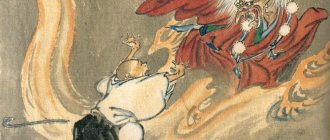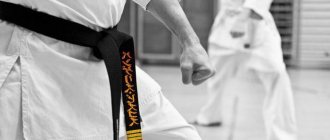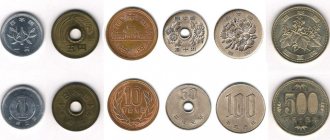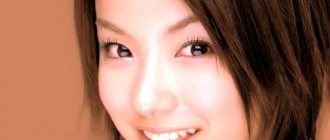When talking about Japanese money, the yen is mentioned first. The unified currency in use today has a long, complicated history. The name translates as “round”, but before the modern round, almost 1,700 different variants were used on the islands. The ancient Japanese currency was made from precious metals, and its diversity shows the strength of feudal fragmentation. The emergence of a stable centralized power affected the monetary system - the rulers brought the signs used to a common denominator.
"Round"
History of banknotes
The first paper bills appeared in the Land of the Rising Sun at the turn of the 16th-17th centuries and were called “Yamada hagaki”. They were printed in the province of Yamada - hence the name, and the process was controlled by the clergy of the ancient temple.
In the mid-19th century, the eastern country was already well known and attracted Europeans. Entrepreneurs of all calibers arrived from Europe and sought to export gold from Japan. The excitement was explained by the fact that in the east gold could be purchased at a rate of 1:5 to silver, while in Europe this ratio was three times higher.
The island nation's economy was under threat. Then the Japanese government introduced Mexican dollars into circulation - they were printed in the country. In parallel with this, the feudal princes began issuing their own money - financial chaos began. During the period described, almost 1,700 varieties of banknotes and coins circulated in the state, denominations were rapidly losing value, and the market was in a fever.
The situation began to change after the civil war of 1868, when Emperor Mutsuhito began to rule the country. This period went down in history as a bright one, because the new government took up reforms in earnest - they also affected finances. The government decided to modernize the monetary system according to European models.
In 1869, the yen began to be introduced into circulation; this process lasted three years. And in 1877 it became the only sovereign currency. The metal coins had a neat round shape; the old denominations were removed from circulation, replacing them with new designs.
There were no major disruptions for the next 50 years until the Bank of Japan introduced the 200 yen note in 1927. Its emergency introduction was explained by the financial crisis. The bill had a clean reverse side, a feature that collectors value it for.
The most pressing questions
On online tourism forums, a large number of issues related to the financial aspects of staying in Japan are discussed. Let's look at the most common ones.
What currency to take with you
The answer to the question of what currency to take to Japan logically follows from everything said above - the yen is best. Russians planning to visit the Land of the Rising Sun are advised to purchase its banknotes in Russia, for example, at Sberbank.
If at the time of visiting its branch there is not enough Japanese currency, you can place an order and receive yen in 3-5 days, or even faster. This is much more profitable compared to the upcoming step-by-step conversion of Russian rubles in a bank located in Japan, first into dollars or euros, and only after that into yen.
Is it possible to make payments using a card?
It is, of course, possible to pay for goods and services using a bank card in Japan. Almost every store, even not the largest one, has terminals. Most supermarkets and restaurants accept MasterCard, Visa, American Express, and Visa Electron cards for payment.
However, the best option is to use a plastic payment document from the JCB international system. The fact is that it was founded precisely in the Land of the Rising Sun. Therefore, JCB cardholders can count on pleasant bonuses when they use them in Japan.
For example, when you use it to pay for tickets for one of the JAL flights, you will receive a 20 percent discount on Airport Limousine Bus services, which will take tourists to the center of the Japanese capital.
Which Russian bank cards are accepted in Japan?
In the context of this issue, it is appropriate to continue the conversation about JCB cards. Thus, as of the third quarter of 2021, these plastic payment documents are issued in Russia by Rosselkhozbank, Gazprombank and Almazergienbank (Sokha Republic). Moreover, there is a large selection of card categories – from “Standard” to Platinum.
In addition, Citibank cards are accepted in Japan. But, although Citibank of Japan and Citibank of Russia are the same brand, transfers between card accounts are a rather expensive service.
The situation with Sberbank is somewhat different. Judging by reviews on online forums, very few ATMs work with his cards in Japan.
One more point should be taken into account. The bank, seeing that a money transaction was carried out far beyond Russia, may block the card, assuming that it was stolen or lost. To avoid such an unpleasant situation, when going on a trip, it is recommended to notify your issuing bank about this.
Are there other methods of calculation?
In Japan, calculations can be made using various technologies. Let's name the most popular ones.
- E-Money or electronic money. Appeared under the name Edu on a contactless smart card at the end of 2001. You can pay with them in some stores and shopping centers, as well as on the Internet.
- Prepaid Cards – prepaid cards. The first prepaid rechargeable smart card, Suica, was introduced at the end of 2001 by one of the Japanese railway companies. You can pay for public transport services and payphone use with smart cards.
- Home Banking – home banking. It began to develop in the 1980s. Then it served as a telephone help service, which additionally made it possible to pay for services using the telephone. In 1999, mobile banking became available.
- Convenience store banking – banking in stores with 24-hour operation. Since 1987, 24-hour merchants in Japan have been accepting payments from customers to telecommunications companies and utilities through multi-function ATMs with the CASH IN function.
Tax free return conditions
Since mid-2021, an updated Tax Free system has come into effect for foreign tourists in Japan, allowing for a refund of consumption tax.
Find out how to get a visa to Japan.
Previously, it was possible to return 8% of the price of purchased goods only in a certain category.
Now this condition applies to everything that was purchased in the Land of the Rising Sun.
A refund of 8% of the cost of consumer goods is possible only if they are purchased for personal use.
The total purchase amount must be between 5,400 and 54,000 yen. The cost of goods can be summed up, but in this case they must be removed no later than 30 days from the date of purchase. They cannot be used - they must be in store packaging at the time of leaving the country.
Only foreigners can return the tax. Its return is processed in stores operating under the tax-free system - exactly where the goods were purchased. Money is returned in cash or to a bank card.
Occupation currency
During the Second World War, the yen was considered the main currency in Thailand, Korea, Northern China and other adjacent territories, and in 1945-48, American money was also in circulation in Japan.
During the occupation, 6 banknotes were issued in denominations of 0.05-100 yen. The local currency was rapidly depreciating due to the war, and emergency measures were required. In 1948, it was taken out of circulation, replaced by occupation paper money, but they also existed for several months. Then payments in the state were made in American dollars.
Currency of Japan
Like the money itself, the name of these items was borrowed by the Japanese from their Chinese neighbors. The name “yen” originally comes from “en”, that is, “round”. Its short designation is “JPY”. Now it is one of the world's main reserve currencies. Previously, the yen was decimalized and divided into 100 sen. And the senes were divided into rins. In 1954, sen and ryn were abolished and only the yen remained. It replaced the “zeni”, which had been used until that time. The government of the country was just changing the old complex monetary system to a more convenient and understandable one.
Confession
The new history of Japanese money began on April 25, 1949, when it was recognized as a world currency and received the international sign - ¥. Over the years, there have been several issues of banknotes. Old-style money was finally discontinued on January 17, 2005.
Modern banknotes in circulation in Japan are represented by the following denominations: 1000, 2000, 5000 and 10000 yen. Every year, the State Bank issues about 30 billion new banknotes.
Thousand
The banknote is designed in blue, dimensions 150 x 76 mm, issued on November 1, 2004.
The front side features a portrait of Noguchi Hideyo. This scientist was born in Fukushima and became famous for his bacteriological research. His works were devoted to syphilis and other serious diseases. Noguchi also visited African countries and studied infectious diseases. In Africa, he contracted yellow fever, from which he soon died.
On the reverse side there is a cherry blossom, a symbol of Japan, and a view of the mountain.
2 thousand
The banknote is decorated in green, dimensions are 154 x 76 mm. It was put into circulation four years earlier than the others - on July 19, 2000. For the first time in Japanese history, the circulation consisted of one denomination.
The release of 2000 yen was timed to coincide with the beginning of the new century and the G8 summit held in Okinawa. The obverse depicts a gate in the city of Naha, the largest city in Okinawa Prefecture.
On the reverse is a scene from The Tale of Genji and a portrait of the writer Murasaki Shikibu. This story is a masterpiece of Japanese classics.
Currently, 2000 yen notes are not issued - the last issue was in 2004, so they are rarely seen in everyday life.
5 thousand
The design of the five thousand dollar bill is dominated by purple shades. Dimensions – 156 x 76 mm, it was issued on November 1, 2004. On the front side is a portrait of the famous 19th century Japanese writer Higuchi Ichiyo. She became the first woman in the country to have her portrait printed on paper money.
Higuchi is the author of the stories “Muddy Stream” and “Peers.” The writer's fate was tragic - she died of tuberculosis at the age of 24.
On the reverse side is a fragment of the painting “Irises”, which was painted by the famous Japanese artist Ogato Korin.
10 thousand
The banknote is designed in brown shades, dimensions – 160 x 76 mm. Release date: November 1, 2004.
On the obverse is a portrait of the philosopher, teacher, scientist Fukuzawa Yukichi. He lived in 1835-1901 and devoted all his youth and maturity to the development of the state and its renewal. Fukuzawa studied European medicine and English, and at the age of 25 he went on his first trip abroad - he was impressed by the Western way of life. After a while, Fukuzawa founded the private Keio University - this educational institution is one of the most prestigious in the Land of the Rising Sun.
On the reverse of the banknote is a phoenix bird, popular in Japanese culture. She is considered the messenger of happiness.
Tipping in Japan
A topic directly related to money. I personally am glad that in this beautiful country there is simply no tradition of leaving tips. The waiter or room cleaner will decide that you simply forgot your change and will try to return your money.
I’m finishing today’s conversation about money. I hope that the topic was informative and interesting for you, and that I was able to tell you something new and interesting. I promise to find you many more interesting topics about this magical country and its inhabitants. Subscribe to updates and share facts with friends on social networks. All the best.
Lika Raido
Protective elements
On Japanese banknotes, regardless of the year of issue, great scientists, cultural and artistic figures, other significant persons, as well as symbols that played an important role in the history of the state are immortalized.
The security of modern paper money meets high international standards. The Japanese have always paid special attention to this point. There is a Money Museum in Tokyo - dozens of exhibits collected in the exhibition clearly show the history of banknotes and their protection from counterfeiting. Already in the 17th century, feudal princes used watermarks.
Today's banknotes are protected by several elements. Among them:
Intaglio is an intaglio printing technology that involves applying a relief image to paper in a specific location. This allows people with poor vision to determine the denomination by touch.
On banknotes in denomination:
- 10,000 – Latin letter L;
- 5 000 – octagon;
- 1000 – horizontal lines;
- 2000 – three laps.
Watermarks are a common method of protection; they can only be seen against the light. The paper is slightly thicker where the watermarks are located.
Holograms are present on large denominations of 5 and 10 thousand yen. The images change depending on the user's viewing angle.
Hidden images - if you look at the bill directly, they are not visible. But if you change the angle, the image appears. On a ten-thousandth bank note there is the number 10,000 (on the obverse) and the word NIPPON (on the reverse).
Pearlescent Ink – There are silvery pink designs on both sides of the front of the paper note. They are translucent, the shade resembles mother-of-pearl. You can see them by looking at a banknote from a certain angle.
Fluorescent ink - Japanese money glows orange in UV light. Some elements emit a green glow.
Interesting details
Previously, Japanese paper money often depicted bearded men, and this is not just like that. This was done to make money more difficult to counterfeit. Many small details (hair, beard, mustache) make it difficult to make illegal copies.
- Residents of Japan, when pronouncing the name of their money, say “en”, not “yen”. Previously, the word was pronounced as “ven” (that’s how the hieroglyph was written), but over the years the first letter was lost. Foreigners, translating the word from Japanese, began to write the Japanese “e” in transcription as a combination of the letters “ue”, and this is how it turned out “yen”.
Term of use
On average, a banknote is in circulation for 2-5 years. The duration of use depends on the denomination: small banknotes deteriorate faster than large ones.
The Japanese are a practical and pragmatic nation; nothing is wasted among them. Worn-out money is withdrawn from circulation and then shredded centrally—the procedure is supervised by the national bank. After grinding, the raw materials are processed into toilet paper.
Coins of the 16th-19th centuries
Let's go back to the period when every Japanese ruler or clan head could come up with and issue his own currency. In use at this time there were mainly oval coins made of gold or silver.
The first coins were issued by Koshi Takeda, the ruler of the largest gold-mining region in Japan. Their name was “Koshi Kin”, the cost of each was equal to its weight. Then, different types of coins began to be minted throughout the country.
When shogun Toyotomi Hideyoshi came to power, he began making new ones. The ruler established a different monetary system. Now it was based on three types of coins made of different metals: gold, silver, copper. Each coin now has a specific denomination.
Paper money first appeared in the town of Ise, called “Yamada Hagaki”, it was issued by private traders under the control of merchants and priests. Soon gold and silver mints appeared in Japan.
Determining Value
The relative value of the yen is determined in the foreign currency market by economic factors of supply and demand. The supply of yen to the market is governed by the desire of currency holders to exchange it for another in order to purchase goods, services or shares. Demand for the yen depends on the desire of foreign visitors to buy goods and services in Japan and on their interest in investing in Japan (buying financial stocks with yen).
Beginning in December 1931, Japan gradually moved away from a gold standard system to a managed currency system.
Honesty and integrity
Don't worry if you lose money on the street or in any building in Japan. The simplicity and honesty of these people does not allow them to pick up and appropriate the found banknote. In any case, they will hand over the money to the nearest police station, but for this you will have to pay a small fee of about 20% of the amount.
But if a person does not contact the police for the missing money, after six months the money found will go to the person who discovered the wallet. Of course, it is better not to be absent-minded and not to lose wallets and valuables, so that later you do not waste time searching, but enjoy the wonderful nature of Japan. But you can be sure that the Japanese are not greedy people, but, on the contrary, they are sincere and very generous. After all, Japan's money is earned through honest and painstaking work, so the Japanese value their own and other people's work.
Rare money
There are several types of Japanese banknotes that are dedicated to some memorable event. This money is more valuable compared to banknotes and coins intended for everyday use. These include the following types:
- 1986 10,000 Yen silver coin. Despite the fact that the circulation exceeded 10 million pieces upon release, it is a very rare specimen. The release was timed to coincide with the 60th anniversary of the reign of Emperor Hirohito.
- A silver 1000 yen coin issued in 2000. This year marked the 50th anniversary of the launch of the first Shinkansen train in Japan.
- Silver coin of 2003 with a face value of 1000. This year celebrated the annexation of the Amami Islands to Japan. It has a small circulation - about 50,000 pieces.
These coins can only be seen in the collections of numismatists or in government museums, as they are part of national history. 2000 Japanese yen are also valued. Banknotes in circulation are now difficult to find, they are almost out of circulation.
Tokugawa Shogunate (Edo) (1603-1867)
Mon - anonymous cast coinage
100 mon without date (1835-1870)
bronze TEN-HO / TSU-HO TO HYAKU (100) Y#7 Coin price - $10-15
4 mon without date (1768)
bronze KWAN-EI / TSU-HO 21 wave C# 4.1 Coin price - $3-5
4 mon without date (1769-1860)
bronze KWAN-EI / TSU-HO 11 waves Y#6 Coin price - $2-4
4 mon without date (1863-1867)
bronze BUN KYU EI-HO 11 waves C#6 Coin price - $2-4
1 mon without date (1636-1656)
copper KA-NEI / TSU-HO Y#1.1 Coin price - $2-4
1 mon without date (1668-1700)
copper KA-NEI / TSU-HO BUN Y#1.2 Coin price - $2-4










